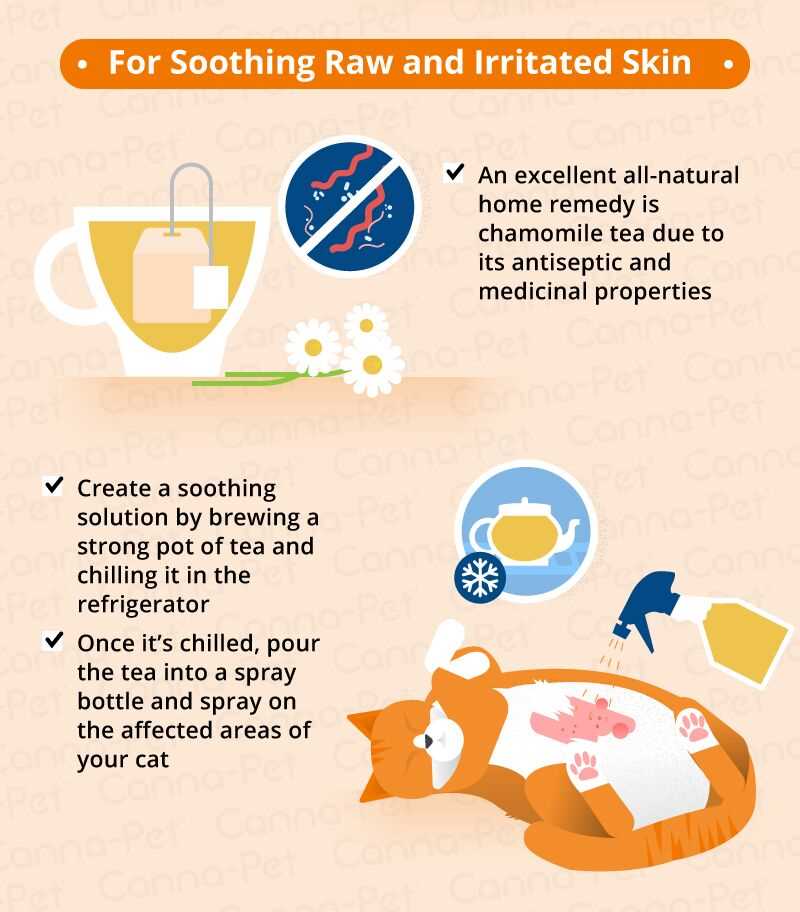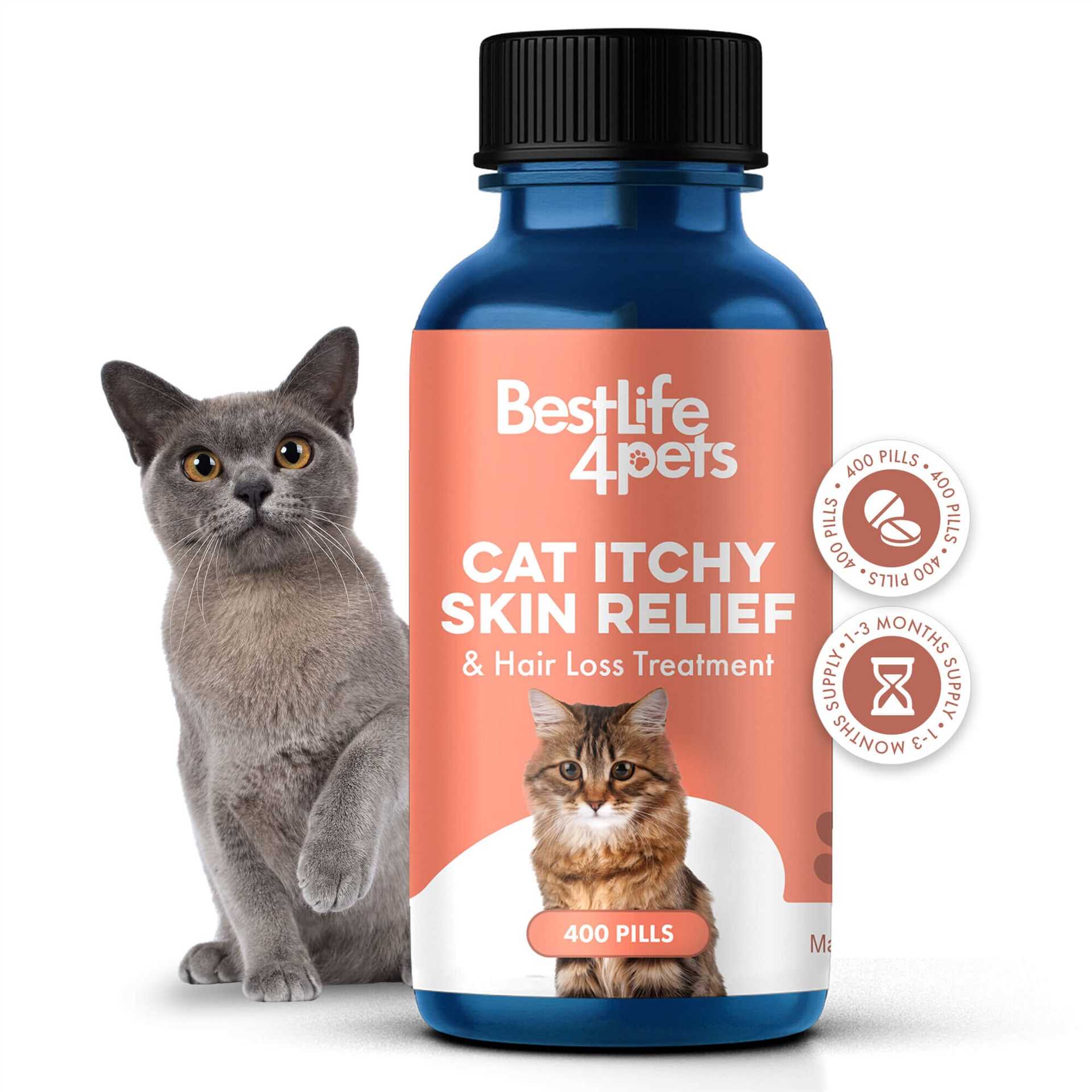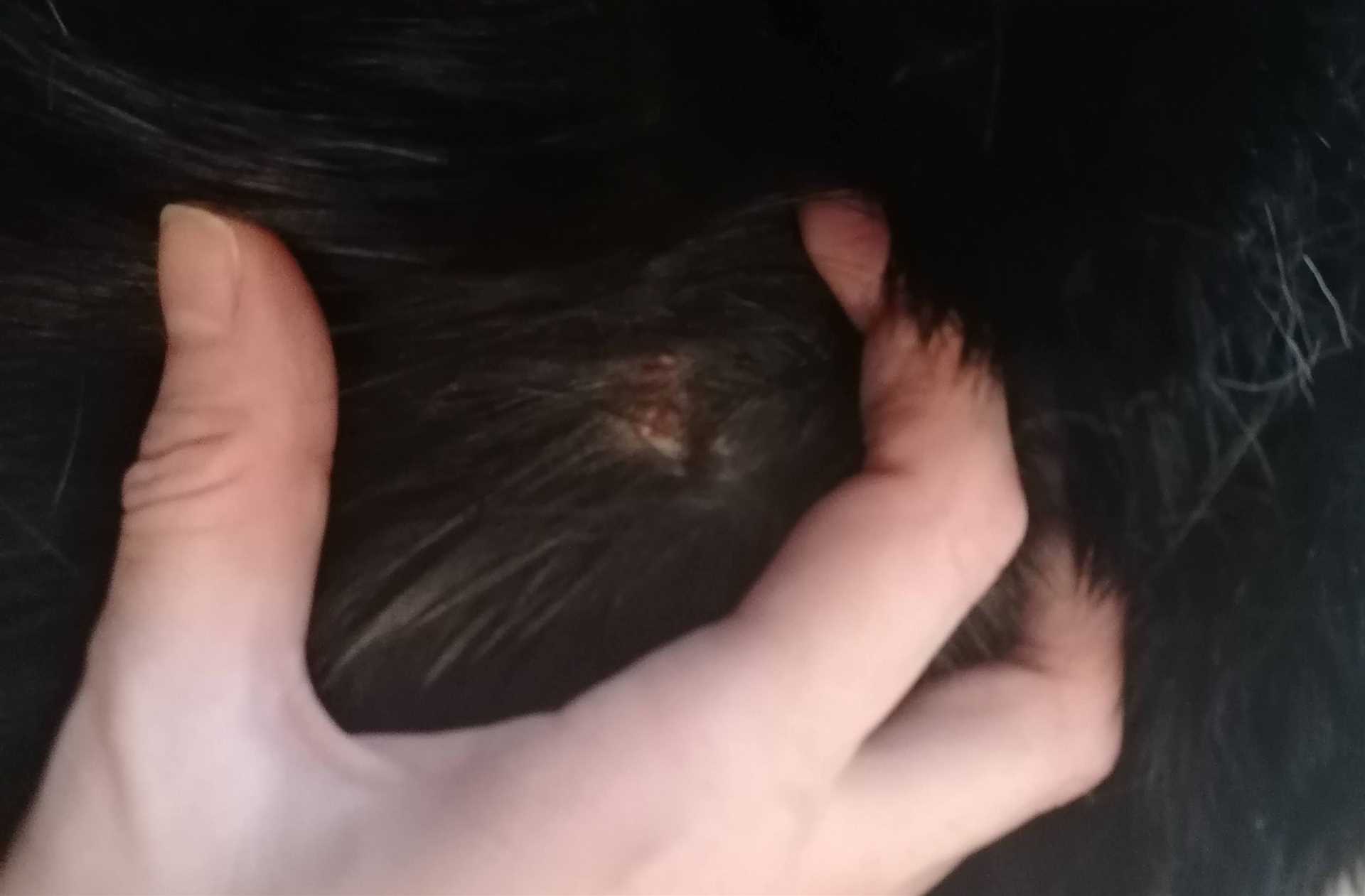Switching to a grain-free diet can significantly improve skin conditions. High-quality proteins and fresh fruits or vegetables often lead to noticeable changes in fur texture and skin health. Consider introducing fish oil supplements, rich in omega-3 fatty acids, to promote a shiny coat and reduce inflammation.
Regular bathing with hypoallergenic shampoos designed for sensitive skin can help alleviate irritation. Opt for natural ingredients like oatmeal or aloe vera, which soothe and moisturize, providing relief from discomfort.
Herbal remedies such as calendula or chamomile can be applied topically. These herbs possess anti-inflammatory properties that aid in healing and soothing affected areas. Always ensure that any topical application is pet-safe and consult with a vet if there are uncertainties.
Creating a stress-free environment is equally important. Reducing anxiety can often diminish skin flare-ups. Engage in playtime and provide cozy spots for relaxation to promote overall well-being.
Lastly, regularly checking for allergens in the home, such as dust or mold, can prevent recurring skin issues. Keeping the living space clean and free from irritants supports better skin health.
Identifying the Symptoms of Dermatitis in Cats
Itchy skin is a common sign, often leading to excessive scratching or biting. Look for areas where the fur is thinning or missing, especially around the ears, belly, and paws. Redness or inflammation in the affected areas is another indicator of discomfort.
Watch for flaking or dry patches on the skin; these can be accompanied by scabs or crusty formations. If I start to notice any unusual odors coming from my fur, this could signal an infection associated with skin irritation.
Behavior changes can also be a clue. If I become more irritable, withdrawn, or show signs of restlessness, it may indicate something is bothering me. Excessive grooming can lead to additional skin issues, so it’s essential to monitor my habits closely.
In some cases, swelling or bumps may appear. These can be a reaction to allergens or irritants in my environment. If other symptoms persist, it might be time for a closer examination by a vet to rule out any underlying conditions.
Natural Remedies: Herbal Treatments for Feline Skin Issues
Calendula is a powerful ally in combating skin irritation. Its anti-inflammatory properties can soothe and heal affected areas. Prepare a diluted calendula tea by steeping dried flowers in hot water, allowing it to cool, and then applying it gently to the skin with a clean cloth.
Chamomile for Calmness
Chamomile acts as a calming agent for inflamed skin. Brew chamomile tea, let it cool, and use it as a compress. This can help reduce redness and swelling, providing relief from discomfort.
Aloe Vera for Healing
Aloe vera gel is renowned for its soothing effects. Applying fresh aloe vera directly to irritated spots can facilitate healing and provide moisture. Ensure the plant is organic and free from additives.
- Oatmeal Baths: Colloidal oatmeal can be mixed in warm water for a soothing bath. This helps relieve itchiness and can be a comforting experience.
- Honey for Moisture: Raw honey has natural antibacterial and anti-inflammatory properties. Applying a thin layer to affected skin can help heal and hydrate.
- Fish Oil: Omega-3 fatty acids found in fish oil can reduce inflammation. Consider adding fish oil to meals after consulting a vet for appropriate dosages.
Always consult with a veterinarian before starting any herbal treatment to ensure safety and suitability for individual needs. Regular monitoring of the skin condition is crucial to assess the effectiveness of chosen remedies.
Dietary Adjustments to Reduce Dermatitis Symptoms
Switching to a high-quality, grain-free diet can significantly alleviate skin irritations. Look for options rich in omega-3 fatty acids, such as fish oil or salmon, which promote a healthy coat and skin. Incorporating these fats into meals can enhance the skin’s barrier function.
Consider Novel Protein Sources

Introducing novel proteins like duck, venison, or rabbit may help identify and eliminate allergens present in common ingredients. Gradually transitioning to these proteins can minimize adverse reactions and improve overall skin health.
Hydration is Key

Ensuring ample water intake supports skin hydration. Offering wet food or adding water to dry kibble helps maintain optimal moisture levels. This simple adjustment can enhance skin resilience and reduce inflammation.
Homeopathic Approaches for Managing Cat Skin Conditions
Consider using remedies like Apis mellifica for swelling and itching, especially if the skin feels hot and sensitive. Another option is Rhus toxicodendron, effective for rashes that worsen with cold and improve with warmth. For dry, itchy patches, Sulphur can provide relief. These remedies can be administered based on specific symptoms observed.
It’s important to consult a homeopathic veterinarian to determine the appropriate dosage and frequency. Remedies may vary depending on individual health conditions and sensitivities. Always observe closely for any changes after introducing new treatments.
In addition to remedies, incorporating flower essences such as Rescue Remedy can help manage stress, which often exacerbates skin issues. A calm environment with minimal stressors can contribute positively to overall skin health.
Regular monitoring of skin condition and behavior will help in adjusting the approach as needed. The holistic care perspective ensures that both physical and emotional well-being are addressed for optimal recovery.
Importance of Regular Grooming in Skin Health
Daily grooming helps maintain my coat and skin in top shape. It removes dirt, dead hair, and dander, which can lead to irritation. Regular brushing encourages circulation and distributes natural oils, keeping my fur shiny and healthy.
During grooming sessions, it’s easy to spot any unusual changes like redness or swelling. Early detection of skin issues can make a difference in addressing them before they escalate.
Benefits of Grooming
Grooming also serves as a bonding experience with my human. It creates trust and comfort, which is essential for overall well-being. Plus, it reduces stress and anxiety, allowing me to feel more relaxed.
For those interested in capturing these moments, investing in a best budget digital camera for macro photography can help document the grooming process and any skin conditions that may arise.
Frequency and Tools
Depending on the length and type of fur, grooming frequency can vary. Short-haired breeds might need minimal brushing, while long-haired ones require daily attention. Tools like slicker brushes or combs can make the process more effective.
In summary, regular grooming is not just about aesthetics; it significantly contributes to skin health and overall happiness.
When to Consult a Veterinarian for Cat Dermatitis
If there is persistent redness, swelling, or sores that do not improve within a few days, a veterinarian’s evaluation is necessary. Urgent attention is required if the skin condition leads to excessive scratching, resulting in further injury or infection.
Signs Indicating Immediate Veterinary Attention

| Symptom | Action |
|---|---|
| Severe Inflammation | Seek veterinary care immediately. |
| Open Wounds | Contact a veterinarian to prevent infection. |
| Excessive Itching | Schedule an appointment to address discomfort. |
| Change in Behavior | Observe for signs of distress and consult a vet. |
If there are signs of hair loss or sudden changes in skin texture, it’s crucial to get professional advice. Allergies or underlying health issues may need to be addressed. Keeping the living environment clean, including using an under bed blocker for cats, can help minimize irritants that exacerbate skin problems.






